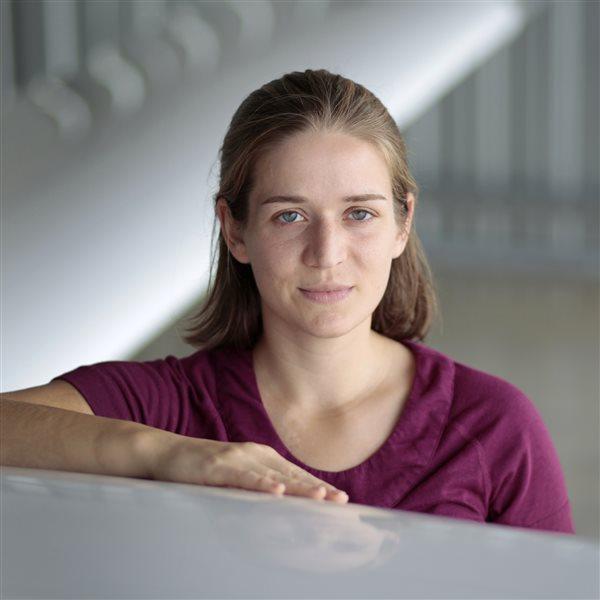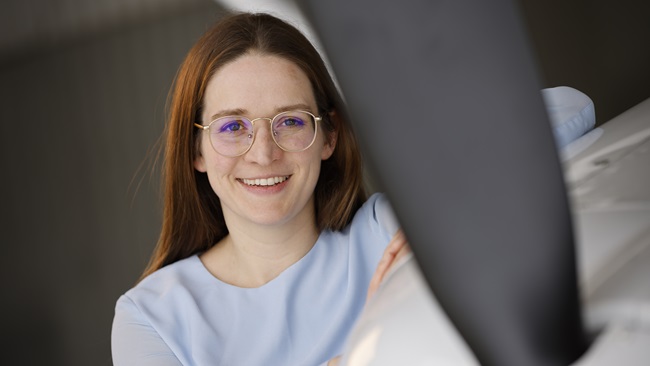Going mainstream
Could a special airworthiness certificate unlock the U.S. market?

The problem? It’s not the airplane, Hankins says. Pilots love the efficiency of the Rotax-powered two-seater that he flew from Tulsa to Oshkosh, Wisconsin, nonstop on less than $100 worth of fuel. They like the simplicity and reliability of fixed gear, the safety of the airframe parachute, and the modern composite construction.
“We hear the same comment over and over that this is one of the most beautiful airplanes in this category that they’ve seen,” Hankins said.


What they don’t like is the airworthiness certificate. The airplane in Hankins’ hangar at Tulsa Riverside Airport (RVS) is registered in the experimental exhibition category. Customers are wary of the limitations on how this type of airplane may be operated, Hankin says. But that all could change with the implementation of the FAA’s Modernization of Special Airworthiness Certification (MOSAIC) proposal, released in 2023.
MOSAIC would expand the light sport aircraft category in the United States, allowing many modern designs from Europe and other parts of the world to enter the U.S. market as factory-built special light sport aircraft. Under MOSAIC, aircraft with higher speeds and payloads, constant-speed propellers, retractable gear, and even turbine engines or electric propulsion systems may qualify as LSAs by meeting ASTM standards instead of the more cumbersome certification requirements of Part 23. Ex parte rules limit what the FAA can communicate as it finalizes the regulations, but AOPA anticipates publication of a final rule in 2025.
“We’ve been disappointed several times,” he said. “We’ve heard different targets from the government bodies and sanctioning bodies. But perhaps this year, MOSAIC will pass.”



110 percent
Sitting on the showroom-white floor of Hankins’ hangar, the G750 looks like a light sport airplane that’s been enlarged to 110 percent. The curvy carbon-fiber airframe, two seats, ballistic parachute, Dynon avionics, and Rotax engine are all common to U.S. LSAs, but this airplane is more substantial. Its maximum gross weight of 1,653 pounds means you don’t need to choose between carrying a passenger and baggage, and at almost 48 inches, the cabin is wider than that of a Diamond DA40. The seats and the pedals adjust, accommodating both Jackson at 6-foot-5 and my 5-foot-1 self with a small back cushion.
In the air, I’ll get a sense of what the new light sport category can be, free of the weight and performance limitations that now define the segment. Hankins, a pilot with experience in a variety of general aviation and military aircraft who flies Boeing 777s for a major airline, guides me through a demo flight on a calm morning after a weekend of howling Oklahoma winds. Windy, dry conditions this March led to a particularly hazardous wildfire season here, and remnants of the fires still smolder in the distance.
Forward-hinged scissor doors open vertically, giving the aircraft a sports-car-like vibe. Climbing in involves the usual twisting and lowering for a low-wing airplane with control sticks. A Kevlar safety cage inside the cockpit protects the occupants in the event of a crash, and Hankins says the BRS parachute is another selling point.
Taxiing with the castering nosewheel requires differential toe braking as we make our way to the runup area at the busy GA airport. We turn on the second boost pump, conduct a normal Rotax runup to 4,000 rpm, and head to Runway 19L. This G750 has the 115-horsepower Rotax 914 UL, but 160-horsepower Rotax 916 iS or 141-horsepower Turbotech TPR-90 engines are now the factory standard options.
I apply power slowly and rotate at 55 to 60 knots indicated with light back-pressure. At 1,000 feet msl, Hankins pulls the power back to 34 inches manifold pressure, the top of the green arc.
Dynon SkyView screens are highly customizable, and this one depicts traffic and terrain around us in synthetic vision. Hankins calls up the flight director, and in this configuration, dual-cue crossbars replace the inverted-V flight director I’m accustomed to. I chase the bars momentarily, then climb at about 70 knots and 900 fpm. The airplane is more responsive than common Cessnas and Pipers, and Hankins reminds me to rest my forearm in my lap to stabilize the stick and use fingertip control forces.
Hankins walks me through autopilot operations with the integrated two-axis Dynon autopilot, which is simple and intuitive. At the economy cruise setting of 29 inches of manifold pressure, 5,300 rpm, fuel flow is a little more than 5 gallons per hour. The wing loading of 12.9 pounds per square foot is closer to that of a Cessna 172 than current LSAs, and it feels stable throughout 360-degree steep turns in both directions. Pitch and roll forces feel balanced. Stalls are docile, with no wing drop.
Hankins demonstrates VY and VX climbs, producing 1,000 and 900 fpm climbs, respectively. Our true airspeed is 127 knots at 3,000 feet.
“As you can see, this airplane is something that you can master pretty well and manage pretty well as a beginning pilot,” Hankins says. “For those out there that are just learning to fly or just receiving their certificate, there’s not that much that’s very complex about it.”
Approaching Riverside Airport, we pull back power to 18 inches manifold pressure. The aerodynamically slippery airframe takes a while to slow to flap speed; on downwind, power comes back further to 16 inches to reach 75 to 80 knots. The pattern is bustling with training traffic, and tower clears us for a short approach. Hankins demonstrates the first landing and hands the controls to me for the next circuit.
On downwind, the 648-foot-tall CityPlex Tower is off our right wing, across the Arkansas River from the airport. Lowering flaps results in little nose-down pitching moment, and we fly base at 70 and approach at 65 to 70 knots.
The pilot’s seating position is closer to the ground than that of a Cessna 172, and over the next few landings I tend to flare high, which Hankins says is common and easily overcome. At my eye height, I lose some forward visibility in the flare.
The G750 fills the space between today’s lightweight LSAs and legacy four-seaters. It flies at Cessna 172 speeds with a light sport aircraft’s efficiency. There’s no retractable gear to manage, and no mixture control. It offers the broad appeal of new technology in an accessible package—attributes that could usher in a new mainstream.
“It’s an easy aircraft to transition to,” Hankins says. “It’s something that even the beginning pilot could get in and master very quickly.”


Go get it
Jackson and Hankins wanted to become dealers of a modern aircraft for the next generation of pilots, so they looked to Europe for a modern design that would be faster than current U.S. light sport aircraft, with fixed gear and a modern Rotax engine that could run on cheaper fuel. The G750 appealed to them because it was simple to operate and maintain, efficient, and faster than a Piper Cherokee or Cessna 172. And, it looked good.
“We liked the aesthetics of the aircraft,” Hankins said. “In fact, we get a lot of customers, what attracted them is it’s a really pretty airplane. The lines on it, it’s a work of art.”
 The composite structure resembles other modern European models; in fact, the G750 shares a wing design with the Shark UL, a tandem-seat Czech ultralight. The G750 stood out with side-by-side seating and fixed gear, which the pair thought would broaden its appeal. They traveled to Slovenia in 2022 to tour the GoGetAir manufacturing facilities at Slovenske Konjice Airport (LJSK). The craftsmanship of the operation, the small-company feel, and the founder’s personal involvement helped convince them to become the GoGetAir North American dealer and completion center, maintenance center, and parts distributor."It's an easy aircraft to transition to. It's something that even the beginning pilot could get in and master very quickly,"—Shannon Hankins
The composite structure resembles other modern European models; in fact, the G750 shares a wing design with the Shark UL, a tandem-seat Czech ultralight. The G750 stood out with side-by-side seating and fixed gear, which the pair thought would broaden its appeal. They traveled to Slovenia in 2022 to tour the GoGetAir manufacturing facilities at Slovenske Konjice Airport (LJSK). The craftsmanship of the operation, the small-company feel, and the founder’s personal involvement helped convince them to become the GoGetAir North American dealer and completion center, maintenance center, and parts distributor."It's an easy aircraft to transition to. It's something that even the beginning pilot could get in and master very quickly,"—Shannon Hankins
GoGetAir founder Iztok Šalamon assembled Rally kits for the Italian manufacturer Storm Aircraft before starting work on his own design, which he called the One, in 2009. He later founded GoGetAir (inspired by “go-getter”) with his wife, Ania, and further developed the aircraft as the G750. The company has delivered 23 airplanes worldwide since 2013, including the first airplane of any type to be delivered to a customer with the new Turbotech TP-R90 turboprop.
The Slovenian Civil Aviation Authority allows the company to produce small quantities of the aircraft under a factory-built experimental category that allows for higher takeoff weights than EASA’s very light aircraft category. These aircraft can be flown recreationally anywhere in the European Union.
In the United States, pursuing Part 23 certification would be cost prohibitive for such a small company. The new MOSAIC rules, however, will allow manufacturers like GoGetAir to meet consensus standards developed by an ASTM international industry committee. If the MOSAIC final rule is published by the time you’re reading this, as we hope it will be, manufacturers could earn FAA acceptance of new designs within a year. Scissortail Aerosport is offering the airplane as an experimental amateur-built kit in the meantime, but Jackson and Hankins’ hopes are pinned on MOSAIC.
“Light sport was a good category at the time,” Hankins said. “But I think that in the United States, we’ve somewhat outgrown that. Just because of our basic needs, the size of the country, the distances we travel, and the efficiencies that we’re looking for.” When the regulations allow for faster, more capable light sport aircraft, “these aircraft that have these amenities are going to make up a large percentage of that smaller aircraft sector.” 





 aopa.org/aircraftguide
aopa.org/aircraftguide

